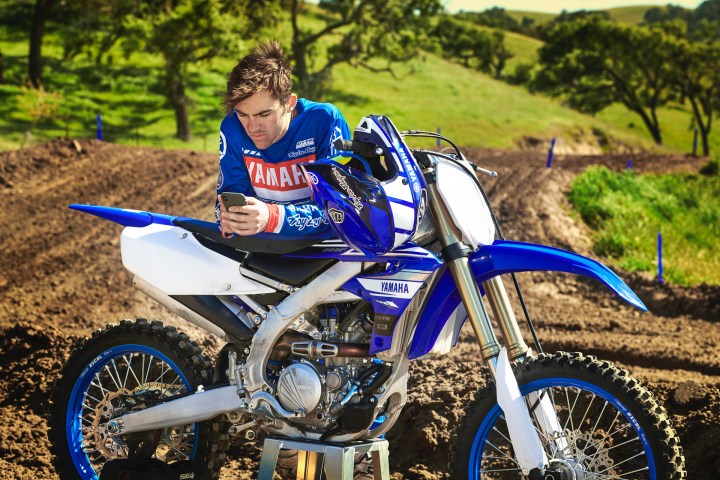
Ever since the addition of electronic fuel injection and lightning-fast computers, motorcycles have become faster and more reliable than ever. The downside of this is that the simple days of “tinkering” are gone. Modern bikes are simply too complex for the average rider to tune in their garage, but while the ability to pull parts off your bike and manipulate them with a screwdriver has gone the way of the Dodo, the spirit of tinkering still exists — and Yamaha has some new tech that makes it easier and more accessible than ever.
The source of this new-found, erm… power, is the new Power Tuner app from Yamaha, available for free on iOS and Android. The app allows owners of certain 2018 Yamaha dirt bikes to change the fueling and firing on their new rides directly from a smartphone. For those of you who aren’t gearheads, fueling and firing refer to how much gas you’re giving with the throttle and at what point the spark plug makes its spark. Changing how these processes occur inside the engine can drastically affect how the bike behaves.
To most people, these concepts are hard to visualize, and even more difficult to understand without previous mechanical knowledge. Yamaha changes that. The Power Tuner App explains these processes with real-time visuals, on a medium we’re already familiar with: our phones. No tearing anything apart, no worrying about getting sensitive pieces dirty. Just pull over, turn the bike off, tweak away, and upload.
This is a pretty big deal. Being able to adjust something like fueling without purchasing special equipment or heading to your dealer is both incredible and totally unprecedented. Yamaha has demystified a complex process and made it not only convenient and easy to comprehend, but also safer than it would be if you had to do everything manually.
With Power Tuner’s robust data and real-time feedback, the owners of Yamaha bikes are privy to more information than ever before.
The app is so simplified that, according to Yamaha’s Off-Road Motorcycle Media Relations Manager, Mike Ulrich, it’s practically impossible to “break” your bike if you tune from your smartphone. It’s designed to be foolproof, but Yamaha also wants to provide some guidance on how best to utilize this new tech, instead of allowing the general public to mindlessly mash buttons to get the 3D graph to look as crazy as possible (we may have tried this).
To achieve this, the company provides downloadable presets known as “maps” so that riders can start with a baseline that comes straight from the factory. The maps currently available for download are for only a few different terrain types, but Ulrich assured us there will be many more to come in the future. From those baselines, you’re free to adjust anything on your bike with the confidence that, regardless of how crazy you go, your tinkering can’t hurt the bike.
Tuning your bike with different maps isn’t the only thing the Power Tuner app is good for, either. With real-time feedback on RPMs, throttle position, coolant temps and battery status, as well as a maintenance tracker, the owners of these bikes are privy to more information (served up in an easily-digestible format, no less) than ever before.
By opening up the world of motorcycle tuning to the layman, not only has Yamaha given first-time riders more information than ever before, it has also given them the ability to adjust the bike to their specific needs — without any fear of causing damage in the process. This means you can have a softer throttle response to begin with and, when the time comes, make it more aggressive as needed. In addition to having a bike that’s more tailored to your specific needs, you’ll also be able to better understand what that “tuning” actually means. And as they say, knowing is half the battle.








